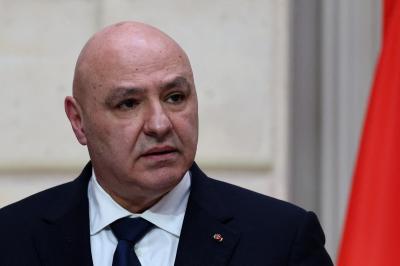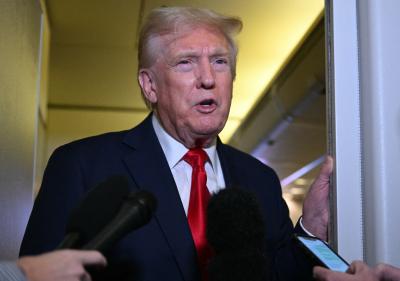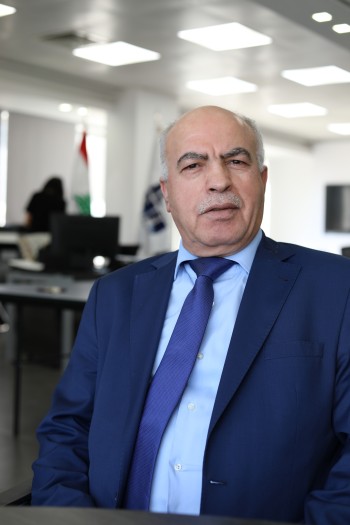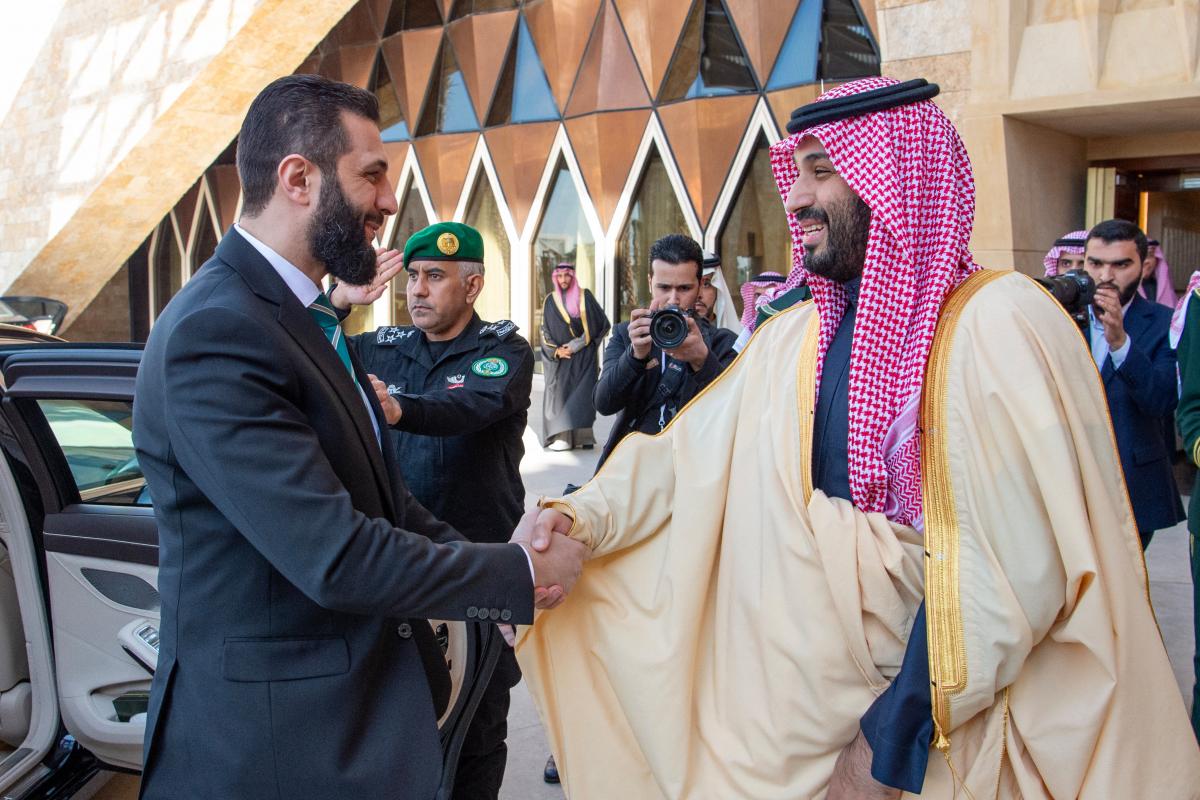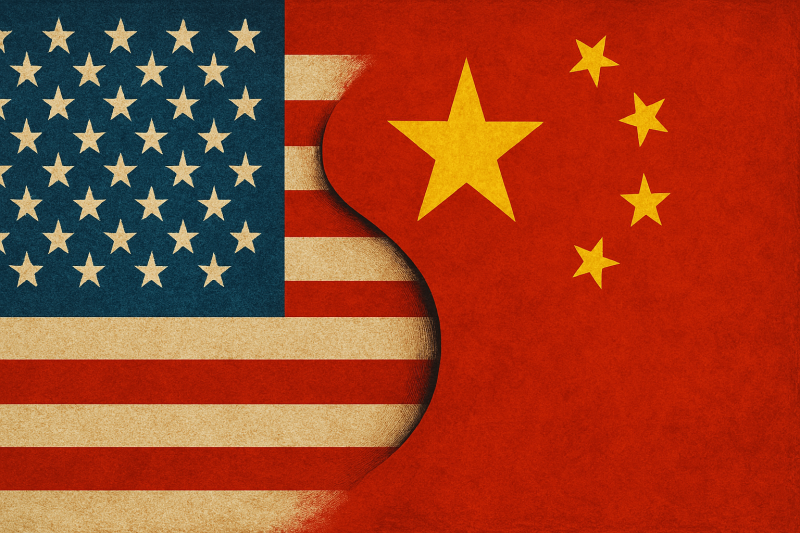Amid ongoing discussions about Lebanon’s new government, its structure, and political balance—expected to steer the country toward recovery—two major developments are taking center stage in both Lebanese and regional politics. These events will have far-reaching consequences for Lebanon and the wider Middle East in the coming months, as they are deeply linked to the ongoing military and political conflicts in the region since the launch of Operation Al-Aqsa Flood on October 7, 2023, which has significantly impacted Lebanon.
The two key developments are the visit of Syria’s transitional president, Ahmad al-Sharaa, to Saudi Arabia and Israeli Prime Minister Benjamin Netanyahu’s trip to Washington.
First Diplomatic Mission: New Chapter for Syria?
Al-Sharaa’s visit to Riyadh is his first since assuming the Syrian presidency. It could prove to be his most significant foreign visit even if he follows it up with a trip to Turkey, which played a key role in supporting Hay’at Tahrir al-Sham (HTS) in its overthrow of Bashar al-Assad’s regime.
Meanwhile, Netanyahu will be the first foreign leader hosted by U.S. President Donald Trump, just two weeks after his official inauguration on January 20.
Syria’s Political Future: Struggle Between Two Axes
Observers of Middle Eastern affairs since the 2011 Syrian uprising believe that al-Sharaa’s visit to Saudi Arabia will lay the foundation for Syria’s new political regime. This regime is expected to replace the over 50-year rule of the ousted al-Assad regime. However, Syria remains at risk of fragmentation, particularly with ongoing retaliatory actions by factions that have taken control.
Two competing visions are shaping Syria’s political transition:
The Turkish Model: Turkey was a primary backer of the anti-al-Assad forces, providing military, financial, and logistical support. This approach favors a governance model inspired by Turkey’s Justice and Development Party (AKP)—a hybrid of political Islam and secularism. However, this model is largely rejected by most Arab states, except for Qatar, a close Turkish ally.
The Arab Vision: This approach, championed by Saudi Arabia, the UAE, Jordan, Egypt, Lebanon, and other Arab nations, opposes any Muslim Brotherhood-led government in Syria. The fall of Egypt’s Brotherhood-affiliated president, Mohamed Morsi, in 2013 serves as a precedent. Al-Sharaa’s visit to Riyadh is expected to reinforce this vision, even if it leads to tensions with Turkey. Relations between Ankara and Tehran have already begun to deteriorate, as Iran sees Turkey’s role in Syria as undermining its regional influence. The Gulf states, along with Jordan and Egypt, are adamant about preventing an Islamist government in Syria. However, a compromise between these two competing visions may be reached, particularly since Saudi Arabia recently finalized a $6 billion arms deal with Turkey. Al-Sharaa is likely to accelerate the formation of Syria’s new political regime without waiting the previously announced four-year transition period.
Trump, Netanyahu: Redefining Regional Politics?
Netanyahu’s visit to Washington is of critical importance, as it will provide the first indications of the new U.S. administration’s approach to the Middle East. Several key issues are at stake:
The post-truce phase in Lebanon: The ceasefire has been extended until February 18, but what comes next? Will Israel withdraw from the Lebanese border areas it occupied during the conflict and implement UN Resolution 1701, or will the truce be extended yet again? How will "Hezbollah" navigate Lebanon’s evolving political landscape under newly elected President Joseph Aoun?
Gaza and the Israeli-Palestinian Conflict: Following the prisoner exchange between Israel and Hamas, will Israel resume its military operations in Gaza? Trump has reportedly urged Jordan and Egypt to accommodate displaced Gazans due to the destruction in the enclave. Will Washington support Israel’s plan to annex Gaza and the West Bank, a move Netanyahu has prioritized in his discussions with Trump? Furthermore, will Netanyahu secure Trump’s backing for a military strike on Iran’s nuclear and strategic facilities—an option he alluded to before departing for Washington?
Israeli-Saudi Normalization: Will Netanyahu return with a firm U.S. commitment to convincing Saudi Arabia to normalize relations with Israel, even without resolving the Palestinian issue? Or will he accept the two-state solution in exchange for Saudi recognition of Israel? Additionally, will Netanyahu bring back a U.S. request for Israel to withdraw from newly occupied Syrian territories, a move that has complicated Damascus’s new leadership? Or will he receive Trump’s endorsement to formally annex these territories, as was the case with the Golan Heights during Trump’s first term?
Netanyahu’s statements and actions upon returning from Washington will offer crucial insights into the next phase of regional dynamics. Similarly, the outcome of al-Sharaa’s visit to Riyadh will shape Syria’s political future—and, by extension, Lebanon’s—where U.S.-Saudi cooperation is currently focused on stabilizing the country’s new leadership.
 French
French


